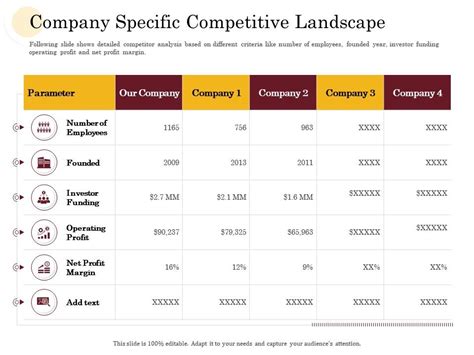Rolex's Competitive Landscape: A Deep Dive into Manufacturing Cost Analysis
Rolex, synonymous with luxury and prestige, occupies a unique position in the competitive landscape of the watch industry. Understanding its manufacturing cost structure is key to appreciating its pricing strategy and market dominance. While precise figures remain confidential, analyzing publicly available information and industry best practices allows us to dissect the factors contributing to Rolex's production expenses. This analysis will explore the intricate details of Rolex's manufacturing, comparing it to competitors and examining the factors that justify its premium pricing.
What are the major components of Rolex's manufacturing cost?
Rolex's manufacturing costs can be broken down into several key components:
1. Raw Materials: This includes high-quality precious metals (gold, platinum), stainless steel, gemstones, and other materials used in case construction, bracelets, and dials. The sourcing of these materials, often from reputable suppliers ensuring consistent quality, contributes significantly to the overall cost. Rolex's commitment to using ethically sourced materials also adds a layer of complexity and, potentially, cost.
2. Movement Production: The heart of any Rolex watch is its in-house manufactured movement. This involves intricate machining, assembly, and rigorous testing. Rolex invests heavily in state-of-the-art equipment and highly skilled horologists, driving up manufacturing costs. The precision and reliability demanded by Rolex necessitate meticulous quality control at every stage.
3. Case and Bracelet Manufacturing: The manufacture of the iconic Rolex cases and bracelets requires specialized machinery and skilled craftsmanship. The complex processes involved in shaping, polishing, and finishing these components, particularly for those made from precious metals, add considerable cost.
4. Assembly and Finishing: Assembling a Rolex watch is a painstaking process requiring experienced watchmakers. The intricate details, meticulous attention to detail, and final quality checks contribute to higher labor costs. The finishing touches, such as hand-polishing and engraving, are also labor-intensive and add to the overall cost.
5. Research and Development (R&D): Rolex consistently invests heavily in R&D, developing innovative materials, technologies, and manufacturing processes. This commitment to pushing the boundaries of horological innovation is a significant, albeit often unseen, contributor to its manufacturing costs.
6. Quality Control: Rolex's reputation is built on unwavering quality. Rigorous quality control measures, including multiple testing phases throughout the manufacturing process, significantly impact production costs. This commitment to excellence, however, is a cornerstone of Rolex's brand identity and justifies its higher pricing.
How does Rolex's manufacturing cost compare to its competitors?
Direct comparison of manufacturing costs is difficult due to the proprietary nature of this information. However, we can infer that Rolex's costs are likely higher than those of many competitors due to its:
- Vertical Integration: Rolex controls much of its supply chain, from material sourcing to movement production, ensuring quality but potentially incurring higher costs compared to brands relying on external suppliers.
- In-House Manufacturing: While some competitors outsource production, Rolex largely manufactures its movements and components in-house, leading to higher labor and capital investment but also greater control over quality and innovation.
- Premium Materials: Rolex utilizes high-quality materials, sometimes rare and expensive, significantly impacting raw material costs.
- High Labor Costs: Skilled horologists are highly compensated, resulting in higher labor costs than for watches produced with less skilled labor.
Competitors like Omega, Breitling, and IWC also produce high-quality timepieces, but their manufacturing strategies might involve more outsourcing or different material choices, potentially resulting in lower costs.
What justifies Rolex's premium pricing?
Rolex's premium pricing isn't solely driven by manufacturing costs. Several other factors contribute:
- Brand Reputation and Prestige: Rolex enjoys unparalleled brand recognition and prestige, commanding a premium price reflecting its status as a luxury icon.
- Exclusivity and Demand: Limited production and high demand further enhance Rolex's desirability and justify its pricing.
- Resale Value: Rolex watches maintain strong resale value, making them attractive investments, contributing to their perceived worth.
- Long-Term Durability and Reliability: Rolex watches are known for their exceptional durability and reliability, justifying a higher initial investment due to their longevity.
How does Rolex's manufacturing strategy contribute to its competitive advantage?
Rolex's vertically integrated manufacturing strategy, investment in R&D, and stringent quality control contribute to its competitive advantage by:
- Ensuring Consistent Quality: Control over the entire production process ensures consistent quality and reliability, solidifying its reputation.
- Protecting Intellectual Property: In-house manufacturing safeguards proprietary technologies and designs, giving Rolex a significant edge.
- Enabling Innovation: Direct control over production allows for faster innovation and implementation of new technologies.
In conclusion, while the exact manufacturing costs of Rolex watches remain undisclosed, analyzing the various factors involved reveals a complex interplay of high-quality materials, skilled labor, advanced technology, and a dedication to unparalleled quality. This comprehensive approach, coupled with its exceptional brand recognition and exclusivity, justifies Rolex's position at the pinnacle of the luxury watch market.

